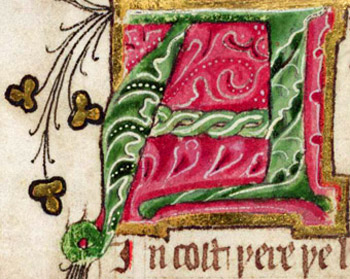Sir Cleges
General Information
Plot Summary

Sir Cleges, one of Uther Pendragon’s knights, and his wife, Clarys, are courteous, gentle and very generous. They give alms and hospitality freely, and every year they hold a lavish Christmas feast. But after ten or twelve years, their wealth begins to deplete, and as they sell off their property, their retinue gradually leaves. On Christmas Eve, while sadly remembering his feasts, Cleges hears heavenly music and celebrates with his family. When he returns from church on Christmas morning, he goes into his garden, where he kneels and continues to pray. Rising, he discovers that one of his cherry trees is miraculously covered in fruit. He worries that it is a bad omen, but Clarys urges him to take the fruit to Uther’s court in Cardiff.
When he arrives, on foot and wearing rags, Cleges encounters in turn a porter, an usher and a steward, none of whom recognise him. Each initially refuses to let him pass, but on seeing the cherries agrees, in return for a third of whatever reward is offered by the king. Uther wonders at the fruit, and offers the ‘poor man’ whatever he desires. Refusing land and money, Cleges requests the right to administer twelve blows with his staff. The king reluctantly agrees, and Cleges divides his ‘reward’ between the porter, the usher and the steward. A harper identifies him, and Uther is overjoyed, having assumed that Cleges was dead. When the reason for his strange request is revealed, the king and his court are even more delighted. Uther gives Cardiff Castle and other goods to Cleges, then makes him his steward and his son a squire. Returning to Clarys, Cleges pays off his debts, and they rule well and prosperously until their death.
From: Anne Laskaya and Eve Salisbury, Eds, The Middle English Breton Lays, Kalamazoo, Michigan: Medieval Institute Publications, 1995.
Manuscript: Oxford, Bodleian Library, MS Bodleian 6922 (Ashmole 61).
Manuscripts
Click a title below to search for all romances in that manuscript.